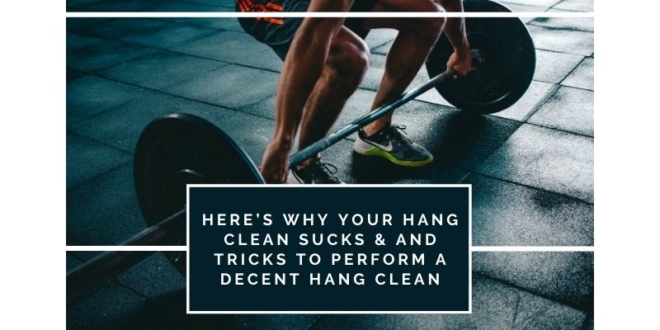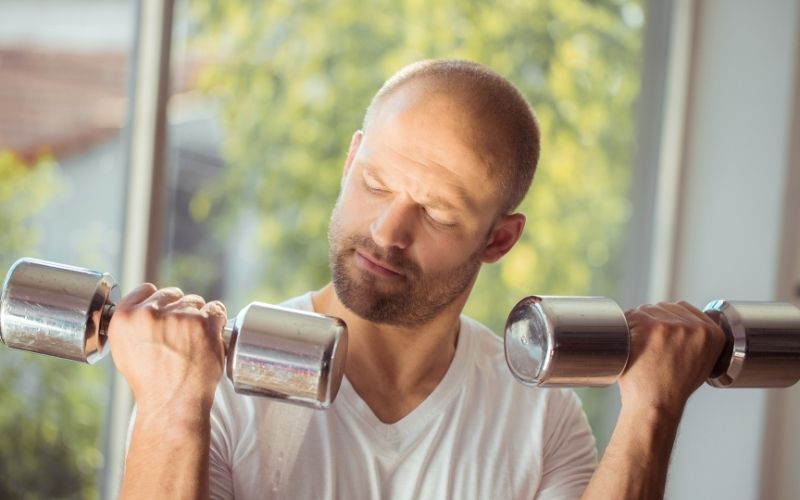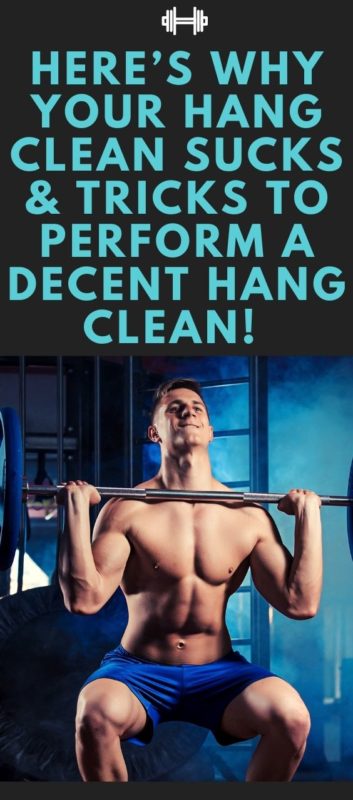The barbell hang clean is a common weightlifting exercise used by athletes to improve power, strength, and speed. This weightlifting exercise positively impacts one’s total body exercise outcomes; therefore, it’s extremely popular among CrossFit participants and athletes alike. No wonder hang clean finds a fitting place in all weightlifting routines.
But the technique involved in the hang clean can be tricky. Fitness enthusiasts practicing hang clean often run the risk of injuring themselves. For instance, if you begin with the barbell too close to the floor, the wrong muscles can get activated and cause issues, such as back pain. A recent study published in the Orthopaedic Journal of Sports Medicine shares that around 19 percent of CrossFit participants get injured while performing the jerk movements involved in a hang clean.
Read on to know the common mistakes fitness-conscious people make when trying to do a decent hang clean. You’ll also find useful tips for performing a perfect hang clean and avoiding related injuries.
Common mistakes fitness-conscious people make when trying to do a decent hang clean
Mistake No. 1: Pulling Weights Using Your Arms
If you are not familiar with a hang clean triple extension mechanics, you are most likely to use your arm muscles to lift the bar. Ideally, clean involves using the triple extension of the ankle, knee, and hip joints to lift the bar off the ground. While pulling using arms might work for lower weights, heavier weights can lead to lower back pain.
When you pull using your arms, you undermine your potential by not allowing the hips to explosively unload. This also leads to performing lower reps than you are capable of. Under correct supervision, your hands function as ropes while the rest of the body helps you pull the weight.
Mistake No. 2: Bending Too Low in the Beginning
A decent hang clean starts just above the knees. When you bend too low to lift the bar placed on the floor, you risk activating the wrong set of muscles and reducing your performance output.
Stand straight with the chest up, back flexed, arms straight, and a balanced foot pressure throughout the whole foot. The hands should be slightly wider than your shoulder-width.
Mistake No. 3: Your Stance Isn’t Proper
The efficiency of your hang clean is dependent on your stance. For instance, having too wide of a stance or too wide of a grip can affect the power output. Start with a hip-width stance and place your hands just a couple of inches outside the legs on the bar. When you catch the clean, landing a bit wider to handle the weight is understandable. However, make sure this change is not carried to the beginning of the next rep.
Another mistake has a weak rack position in which your elbows dip forward, and you bend too much. This can cause you to drop the weight. To overcome this, focus on the mobility of the lats and triceps by performing drills to improve thoracic spine extension.
Mistake No. 4: You Don’t Lift Enough Weight
A properly-executed hang clean develops power, muscle, proprioception and increases caloric expenditure. When you don’t lift enough weight, your body doesn’t work hard to execute a properly timed hang clean carried out in a decent form.
Start with lower weights but keep moving it up. This will allow all your right muscles to be utilized, increasing your power output with every training session. Also, make sure you are working out on a shock-absorbent rubber surfacing to help you perform your hang clean without having to worry about ankle or foot injuries.
Top Tips to Master Your Hang Clean
Now that you are aware of the common mistakes to avoid let’s look at some hang clean best practices. Here are a few tips that can help improve your hang clean.
1 Keep the Weight on Your Heels
To achieve a full extension of hips, knees, and ankles, keep the weight on heels until the bar reaches hip-height. This will help you utilize the full power generated by the hip extension, keep the bar close to the body, and make your pull strong and efficient.
Don’t extend onto your toes until the end of the clean to ensure a good receiving position and decent bar path. Also, avoid landing with your heels elevated. You should always push through and land with weight on your heels to maintain balance and avoid injuries.
2 Put Your Hamstrings to Work
Hamstrings are one of the most powerful extensors in the human body. Engaging your hamstrings in a good hang position allows you to produce maximal force. In a decent hang position, your hamstrings are nicely stretched, and your butt is pushed back hinged at the hips. This position also keeps the load away from your quadriceps.
Lack of hamstring mobility can lead to forwarding collapse over the bar, resulting in knee injuries.
3 Engage the Lats
Engage your lats to stabilize the shoulders and upper back. This will allow your torso to stay over the bar and the weight to stay closer to your body’s center of gravity. It will also give you enough power to pull the bar upwards.
Engaging the lats while pulling the bar develops tension in the upper body. This is a good and easy way to properly get the bar to hip height. Maintaining this tension in the upper body allows more force to be imparted into the bar and keeps the bar path linear.
4 Stay over the Bar Longer
Along with the speed and explosive power, hang clean is also determined by the timing of pulls. Staying over the bar longer helps you identify the right moment for an extension, makes it easy for you to perform the movement, and generates more power.
Keeping the chest over the bar longer allows the bar to travel higher up the thigh. It also helps avoid a series of problems caused due to the bar hitting off the thighs at extension rather than staying close to the hips.
Summing Up
Hang cleans an integral part of the training regimes of athletes and weightlifters. However, if done correctly, it can work wonders for the overall muscle strength and explosive power of fitness-conscious people. Use the information and tips shared above to get the most of your hang clean sessions and have an injury-free workout.
Liked this article? Share it to say “thanks!” Your support is much appreciated!
I would love to connect with you!
You can find me on
PINTEREST, TWITTER1, TWITER2, INSTAGRAM FACEBOOK












